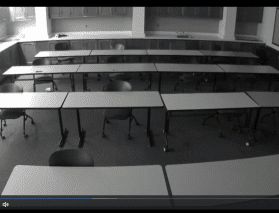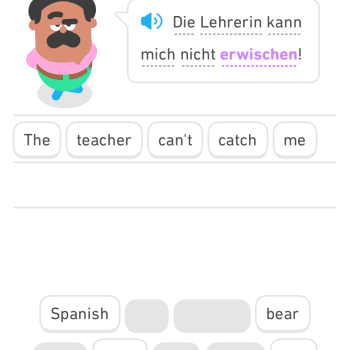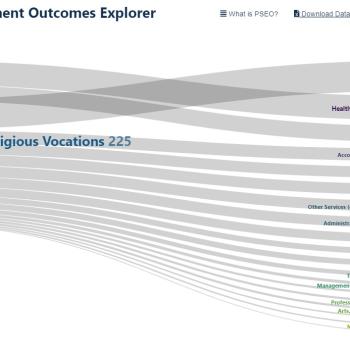This isn’t a post about Les Miserables (although I could easily see myself turning my experience in class that the post is about into a parody song). Education has seen significant changes as we have adapted to the pandemic, and reflecting on the moments when things unfold very differently as a result is an important step towards evaluating what we’ve learned through these times and what we need to make sure we don’t forget if things ever get “back to normal.” Indeed, if we regularly feel the abnormality of current unfamiliar ways of doing things, we also have our attention drawn to the abnormality and/or inefficiency of the ways of doing things we took for granted.
Here’s the story. On the day in question there had been enough snow that morning, on top of earlier snow that had been cleared into ever-growing piles on campus as elsewhere around the city, that the university delayed opening. My first class of the day met on Zoom as a result. In the past it would have been cancelled, but with current technology the closure of campus doesn’t mean the cancelling of classes. No more snow days. I’m not sorry, to be honest. As much as it may be nice once in a while to take a day off and build a snowperson rather than go to work, the effort to catch up with missed content detracts from whatever we might consider positive about snow days.
My second class of the day was in the early afternoon. Since I had the impression that students prefer meeting in person when possible, and having other reasons to travel to campus despite the roads still not being completely clear, I planned to hold the class in the default manner, which has two groups taking turns being in person or on Zoom. A couple of students who are commuters (the exception at my predominantly residential university) asked if it was okay to be on Zoom today, and I said of course, commending them for the wisdom of their decision.
I arrived in our classroom and it was empty, but it was still early. I got things set up, including connecting to Zoom. When the time arrived for class to begin, no one was in the classroom apart from me, and all of the students were on Zoom!
This felt quite natural in some ways, more natural than having half present in the classroom and half on Zoom, which I often feel introduces an inequality, even if it is one that the students take turn sharing.
But there were some things about this particular room that added a comical element. One was the fact that the classroom was one which had its built-in camera aimed at the students’ seats rather than the professor. I appreciate that setup, since it is at least as important that students see each other as that they see me. Indeed, one reason I like Zoom is that it puts everyone “face to face” at close proximity, while in a classroom those in the back are far from the professor and see the backs of other students’ heads.
 Another comical element only became apparent later, as I discovered that this classroom has sensors built in and, in the absence of students, the sensors perceived the room to be empty and automatically turned off the lights!
Another comical element only became apparent later, as I discovered that this classroom has sensors built in and, in the absence of students, the sensors perceived the room to be empty and automatically turned off the lights!
Although I stepped around to wave at the camera at the beginning and the end, on the left you can see the view of “me” that students had throughout most of the class period.
I learned some important things from this experience. One is, of course, that one cannot presume to know what students want or what they may do. But another is that the way we have set up and tend to use some basic educational technology is not optimized for what we use it for, to say nothing of accessibility and inclusivity. Imagine, for instance, if classrooms by default had cameras facing students and the professor so that those joining remotely could see both? Imagine if Zoom or something like it was embedded within an LMS so that as one discussed assigned readings, they were there alongside the video feeds, rather than requiring that one go elsewhere. Imagine how it might be possible to give greater access to educational opportunities on a genuinely level playing field to synchronous and asynchronous learners, to the sighted and those with vision impairments, to the commuter and the campus resident. Campuses could earn more by extending their audiences, which for all but a few privileged institutions is crucial to our being able to offer what we do to anyone.
I stood that day in an empty classroom and yet was face to face with all my students. I opted to share my screen often, slightly more often and for longer periods than I might have otherwise, so that students did not hear my voice accompanied by an image of an empty classroom. I think students not only learned important things that day but genuinely enjoyed the class.
That, at any rate, is my “snow day” story. I hope my students learned as much from it as I believe I did.
One other thing that the snow has reinforced to me is that my prior insistence that teaching 8 am classes interferes with my ability to maintain a regular morning workout routine is not honest. When the snow needs to be shoveled, I exercise in the morning before class. I could do that every day if I set my mind to it and made it part of the routine. I mention this because the pandemic’s exceptional circumstances have exposed plenty of areas in which what we were doing as a rule could have been and should have been better.
Of related interest, there’s a call for papers about online learning in the arts and humanities, as well as articles in Inside Higher Ed about this being the time for reinvention and the relationship between attitude/mindset and one’s experience teaching online.













